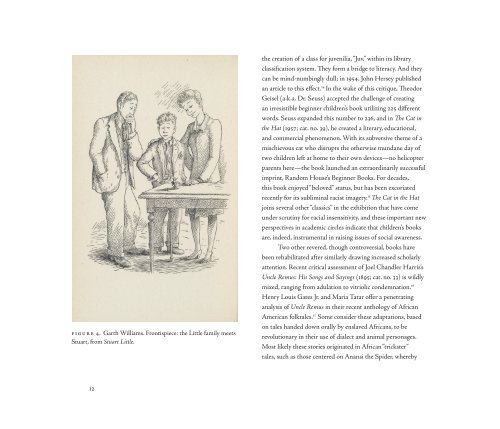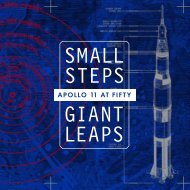Animals Are Us: Anthropomorphism in Children’s Literature; Celebrating the Peter J. Solomon Collection
Why do we tell stories to children through and about animals? Are there reasons why we shouldn’t? Animals Are Us invites explores these questions and more through influential historic examples of anthropomorphism in dialogue with contemporary books drawn from the collection of Peter J. Solomon (Harvard College Class of 1960, MBA 1963) and the holdings of Houghton Library. The exhibition invites you to engage critically with animal anthropomorphism, and delight in the artfulness of this enduring literary genre. Catalog of an exhibition on view at Houghton Library, Harvard University, September 1, 2021 - January 7, 2022.
Why do we tell stories to children through and about animals? Are there reasons why we shouldn’t? Animals Are Us invites explores these questions and more through influential historic examples of anthropomorphism in dialogue with contemporary books drawn from the collection of Peter J. Solomon (Harvard College Class of 1960, MBA 1963) and the holdings of Houghton Library. The exhibition invites you to engage critically with animal anthropomorphism, and delight in the artfulness of this enduring literary genre.
Catalog of an exhibition on view at Houghton Library, Harvard University, September 1, 2021 - January 7, 2022.
Create successful ePaper yourself
Turn your PDF publications into a flip-book with our unique Google optimized e-Paper software.
figure 4. Garth Williams. Frontispiece: <strong>the</strong> Little family meets<br />
Stuart, from Stuart Little.<br />
<strong>the</strong> creation of a class for juvenilia, “Juv,” with<strong>in</strong> its library<br />
classification system. They form a bridge to literacy. And <strong>the</strong>y<br />
can be m<strong>in</strong>d-numb<strong>in</strong>gly dull; <strong>in</strong> 1954, John Hersey published<br />
an article to this effect. 14 In <strong>the</strong> wake of this critique, Theodor<br />
Geisel (a.k.a. Dr. Seuss) accepted <strong>the</strong> challenge of creat<strong>in</strong>g<br />
an irresistible beg<strong>in</strong>ner children’s book utiliz<strong>in</strong>g 225 different<br />
words. Seuss expanded this number to 236, and <strong>in</strong> The Cat <strong>in</strong><br />
<strong>the</strong> Hat (1957; cat. no. 39), he created a literary, educational,<br />
and commercial phenomenon. With its subversive <strong>the</strong>me of a<br />
mischievous cat who disrupts <strong>the</strong> o<strong>the</strong>rwise mundane day of<br />
two children left at home to <strong>the</strong>ir own devices—no helicopter<br />
parents here—<strong>the</strong> book launched an extraord<strong>in</strong>arily successful<br />
impr<strong>in</strong>t, Random House’s Beg<strong>in</strong>ner Books. For decades,<br />
this book enjoyed “beloved” status, but has been excoriated<br />
recently for its sublim<strong>in</strong>al racist imagery. 15 The Cat <strong>in</strong> <strong>the</strong> Hat<br />
jo<strong>in</strong>s several o<strong>the</strong>r “classics” <strong>in</strong> <strong>the</strong> exhibition that have come<br />
under scrut<strong>in</strong>y for racial <strong>in</strong>sensitivity, and <strong>the</strong>se important new<br />
perspectives <strong>in</strong> academic circles <strong>in</strong>dicate that children’s books<br />
are, <strong>in</strong>deed, <strong>in</strong>strumental <strong>in</strong> rais<strong>in</strong>g issues of social awareness.<br />
Two o<strong>the</strong>r revered, though controversial, books have<br />
been rehabilitated after similarly draw<strong>in</strong>g <strong>in</strong>creased scholarly<br />
attention. Recent critical assessment of Joel Chandler Harris’s<br />
Uncle Remus: His Songs and Say<strong>in</strong>gs (1895; cat. no. 33) is wildly<br />
mixed, rang<strong>in</strong>g from adulation to vitriolic condemnation. 16<br />
Henry Louis Gates Jr. and Maria Tatar offer a penetrat<strong>in</strong>g<br />
analysis of Uncle Remus <strong>in</strong> <strong>the</strong>ir recent anthology of African<br />
American folktales. 17 Some consider <strong>the</strong>se adaptations, based<br />
on tales handed down orally by enslaved Africans, to be<br />
revolutionary <strong>in</strong> <strong>the</strong>ir use of dialect and animal personages.<br />
Most likely <strong>the</strong>se stories orig<strong>in</strong>ated <strong>in</strong> African “trickster”<br />
tales, such as those centered on Anansi <strong>the</strong> Spider, whereby<br />
12



